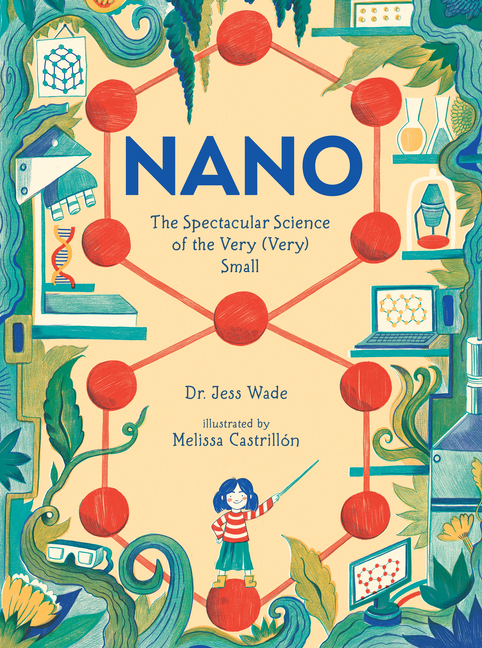Book Description
for Nano by Jess Wade and Melissa Castrillón
From Cooperative Children's Book Center (CCBC)
Playful illustrations accompany an extraordinarily clear narrative by a physicist that explains some basic concepts—atoms, molecules, elements, and molecular structure—before introducing nanomaterial. The child-friendly text builds on common knowledge most children already have to offer comparisons and examples they can understand. For example, “When carbon atoms are arranged in layers and stacked like playing cards, they make graphite . You probably have some graphite in your book bag—it’s used to make the lead in your pencils. Graphite is soft and smudgy, because the layers of carbon atoms slide over one another—which makes it easy to leave a mark on paper.” We then learn that when scientists take one layer of graphite away, they can create a new material called graphene, the strongest material known to humans. Graphene is used as an example of a nanomaterial, and it provides a good basis for the author’s explanation of nanoscience, along with some examples of nanomaterials used to build things already in existence (windows that wash themselves using sunlight) and things that may be developed in the near future (sieves with nanosize holes that might make seawater safe to drink). The book concludes with a brief description of the types of scientists who work as a team on nanoscience research (chemists, physicists, and engineers), some of the tools of their trade (different kinds of microscopes), and how nanoscientists use spectroscopy. (Ages 7-10)
CCBC Choices 2022. © Cooperative Children's Book Center, Univ. of Wisconsin - Madison, 2022. Used with permission.


